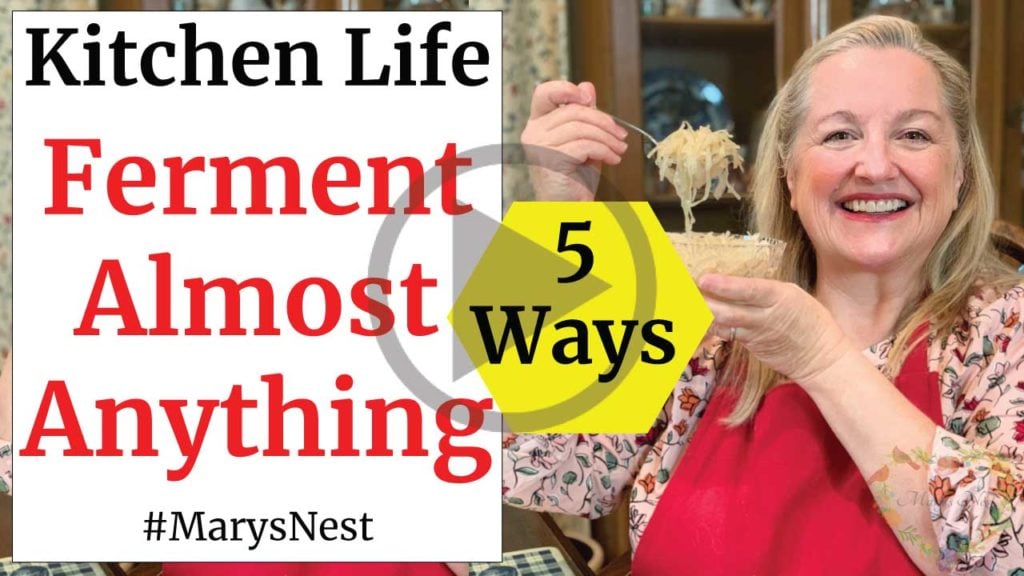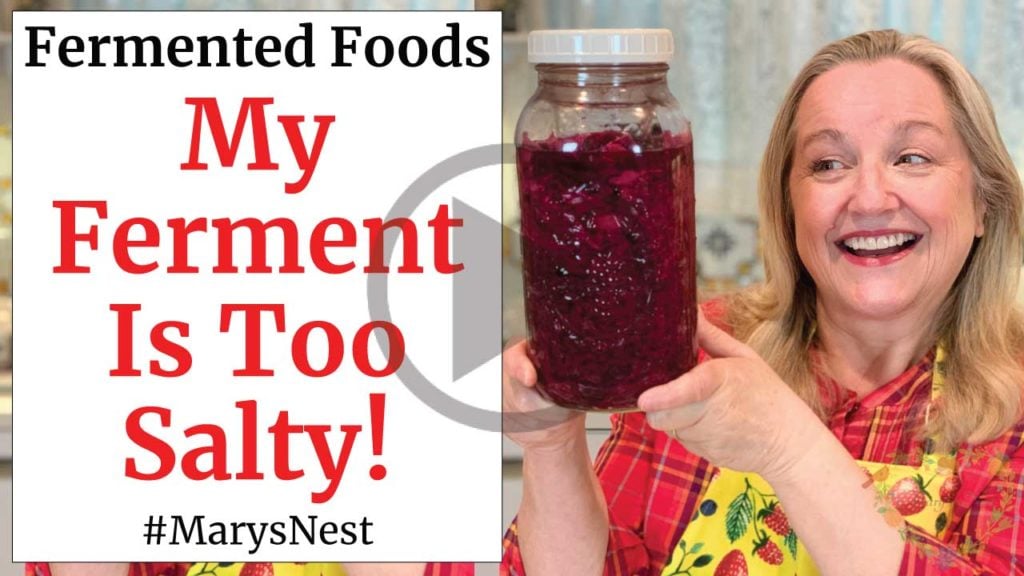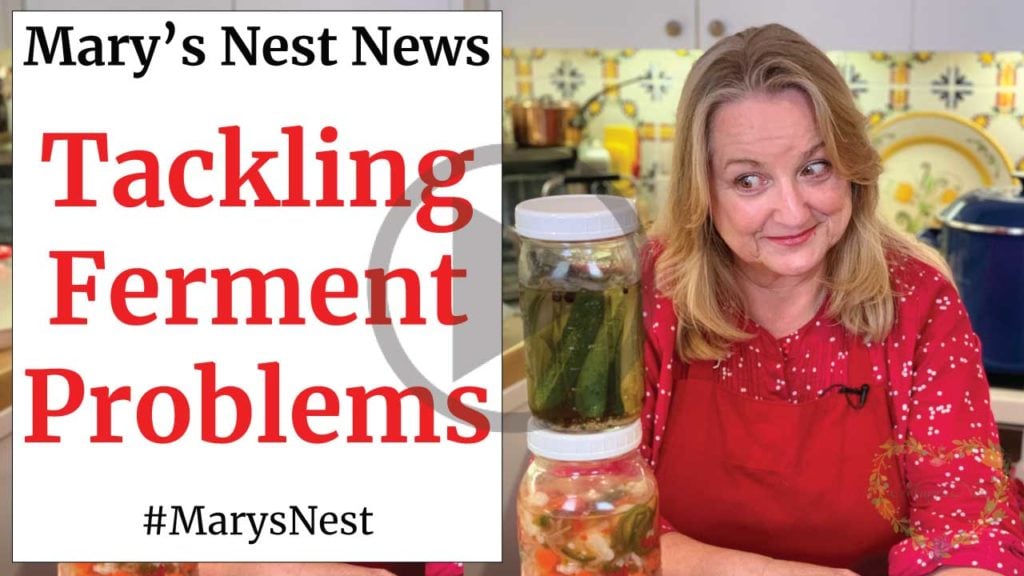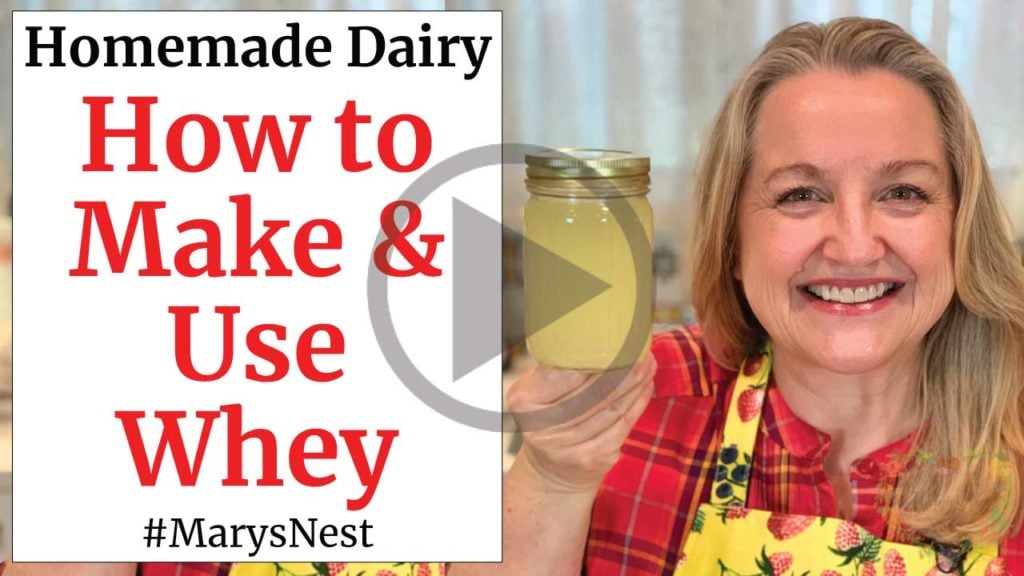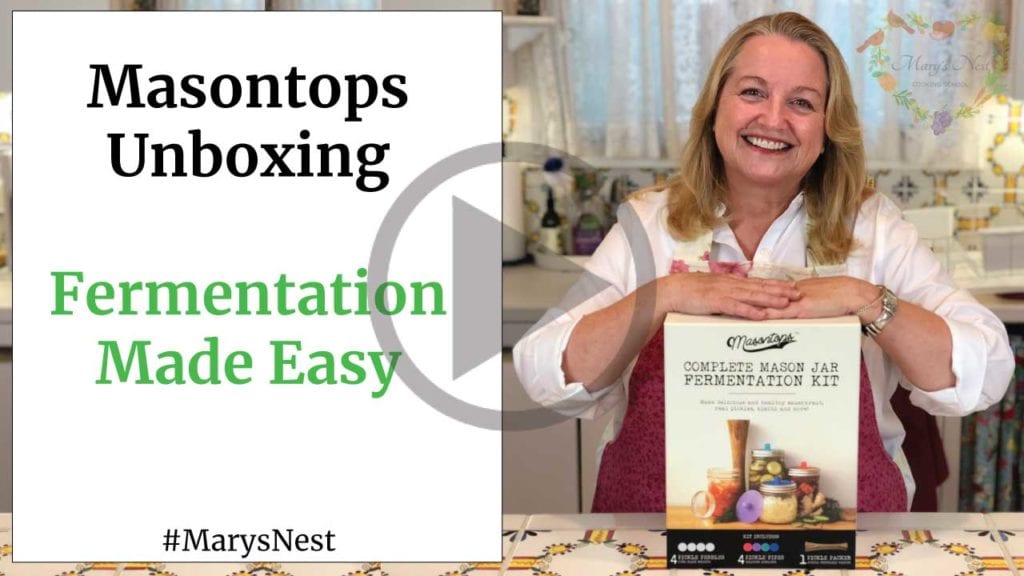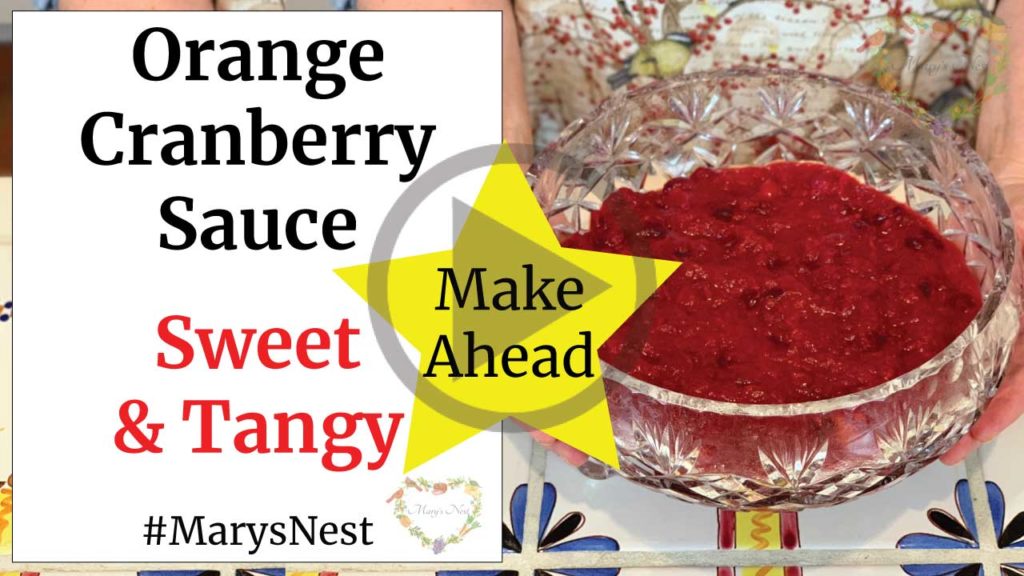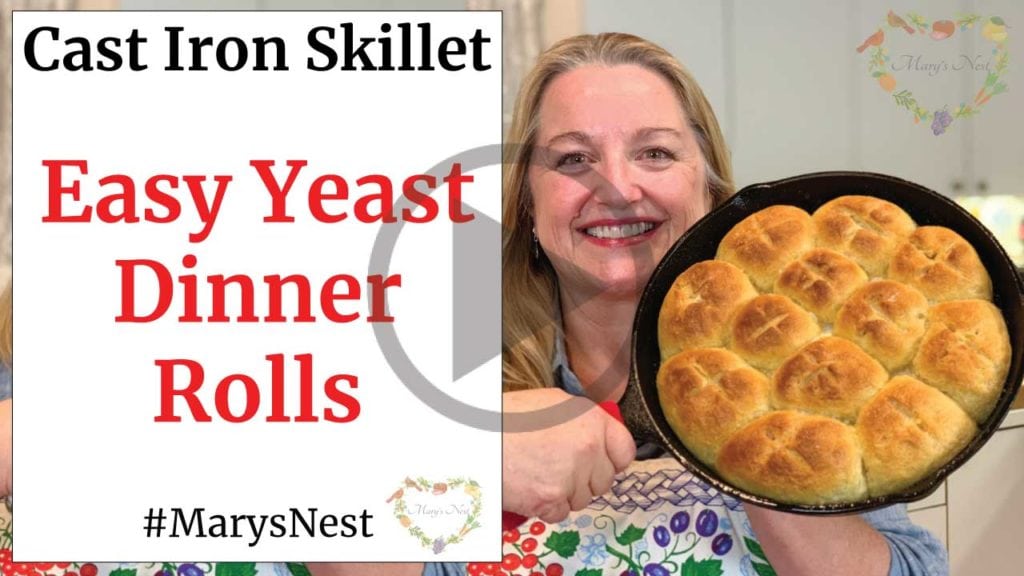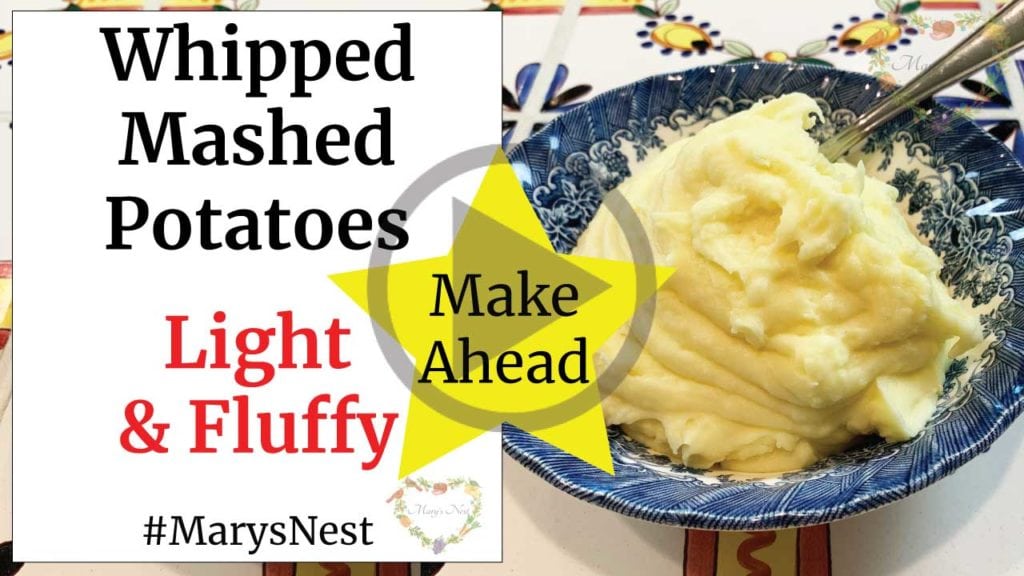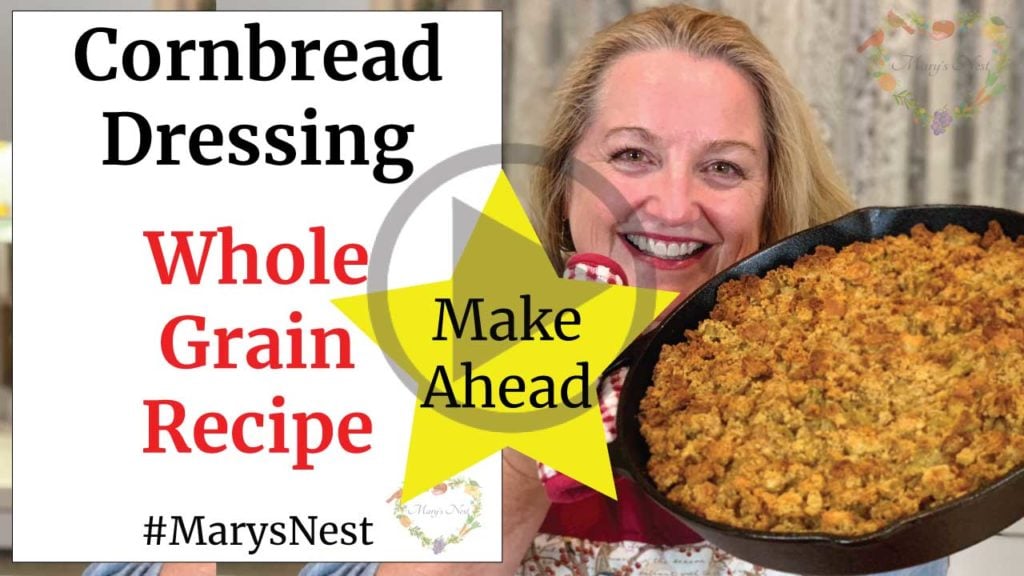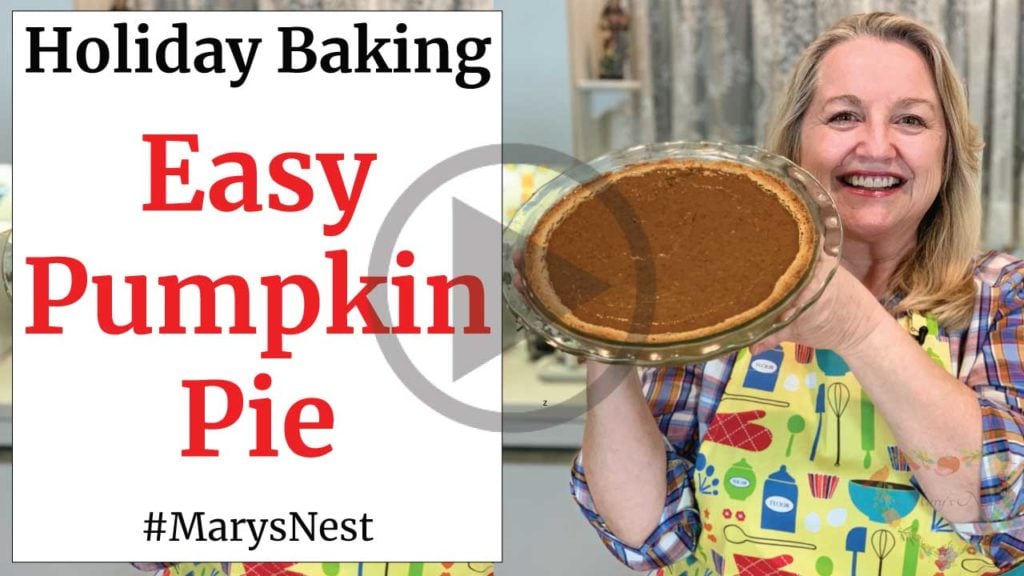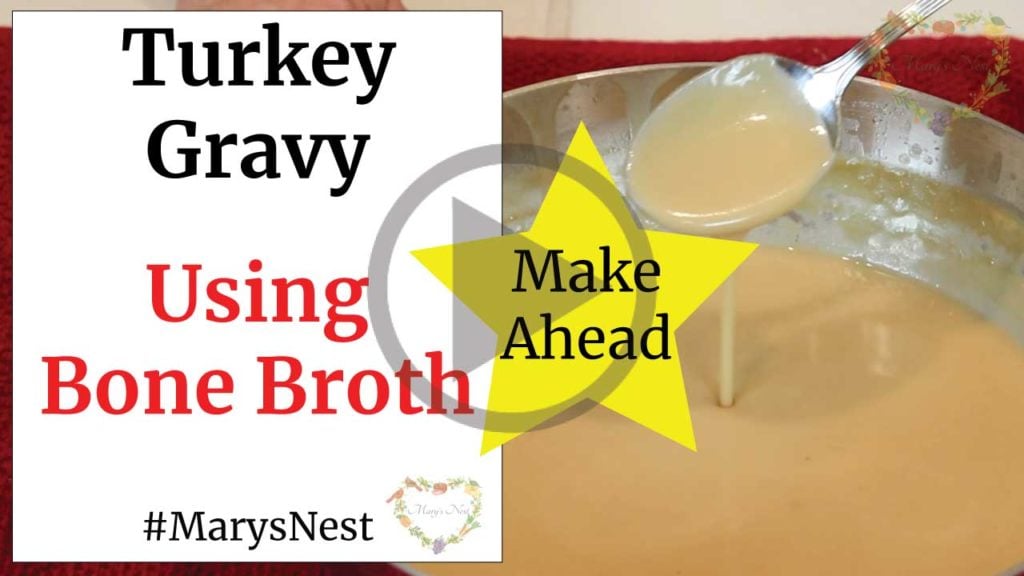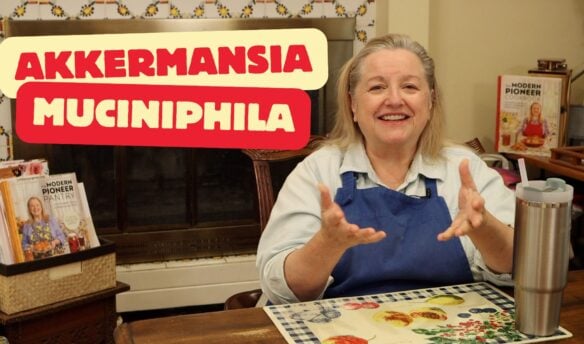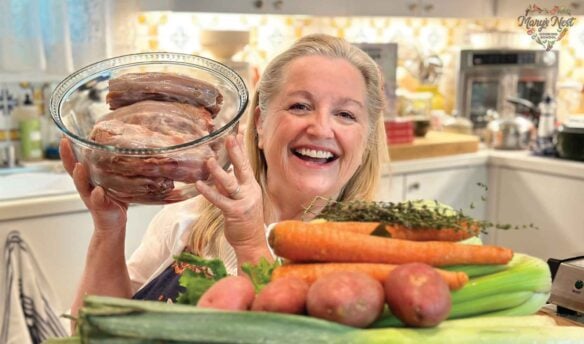Learn how to make Fermented Cranberry Sauce. I also share essential information and tips to help you ferment fruit correctly in my recipe video.
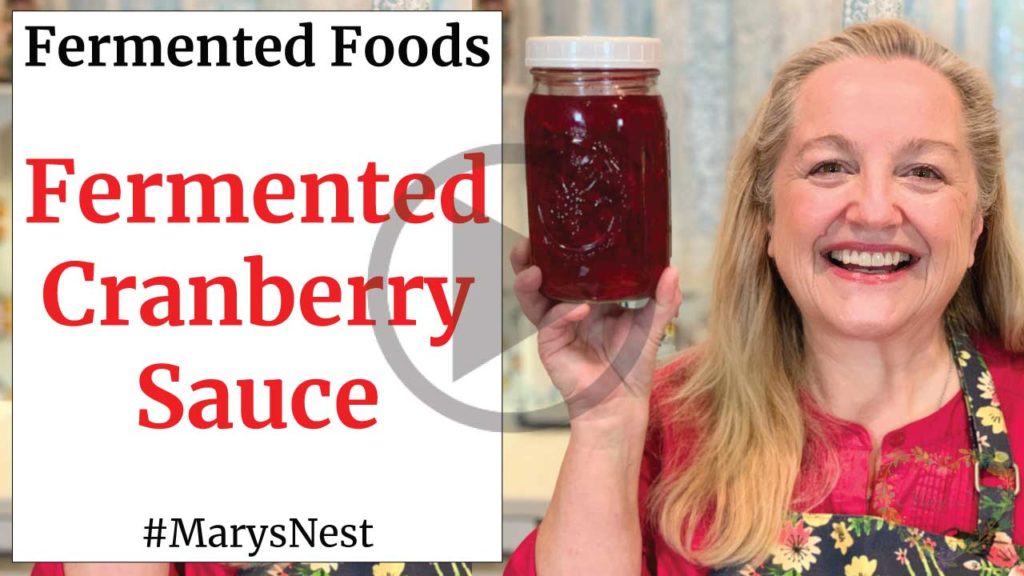
Affiliates note: As an Amazon Associate I earn from qualifying purchases. My content may contain affiliate links to products and services. If you click through and make a purchase, I’ll receive a small commission. It does not affect the price you pay.
Table of Contents
- Why Make a Fermented Cranberry Sauce?
- How Do I Sweeten My Ferment?
- When to Eat Your Fermented Cranberries
- Answering Your Fermentation Questions
- Masontops Fermentation Kit
- Another Cranberry Sauce Recipe
- More Holiday Recipes
- The Modern Pioneer Cookbook
- Download Your Free 36-Page Pantry List
- Join the Traditional Foods Kitchen Academy
- Kitchen Academy Videos
- Fermented Cranberry Sauce Recipe
- Shop for items used in this blog post or video
Why Make a Fermented Cranberry Sauce?
You can certainly make a traditionally cooked cranberry sauce for your holiday table. I even have a tasty Orange Cranberry Sauce recipe to share with you.
But why not take your cranberry sauce to the next level? You can turn it into a probiotic-rich condiment that supports your gut health.
An Important Tip About Fermenting Fruit
Fermented cranberry sauce (or any fermented fruit for that matter) is amazingly delicious. It strikes the perfect balance between tangy and sweet for a pallet-pleasing combination.
When you ferment fruit, your fruit goes through three stages during the fermentation process:
- Lacto-fermentation
- Alcohol
- Vinegar
To enjoy your fermented fruit as a fruit, and not as an alcohol or vinegar, you need to catch it in the lacto-fermentation phase. But don’t worry. This is easy to do.
During days one and two of the fermentation process, you will begin to see a few bubbles starting to form. But by day three or four, your fermented cranberries will begin to bubble generously in their jar. This level of bubbling means they’re ready.
Keep this important timing tip in mind when fermenting fruit, especially when you’re making fermented cranberry sauce. I show you an example of the bubbles produced by fermentation, and I walk you through the fermentation process step-by-step in my recipe video.
How Do I Sweeten My Ferment?
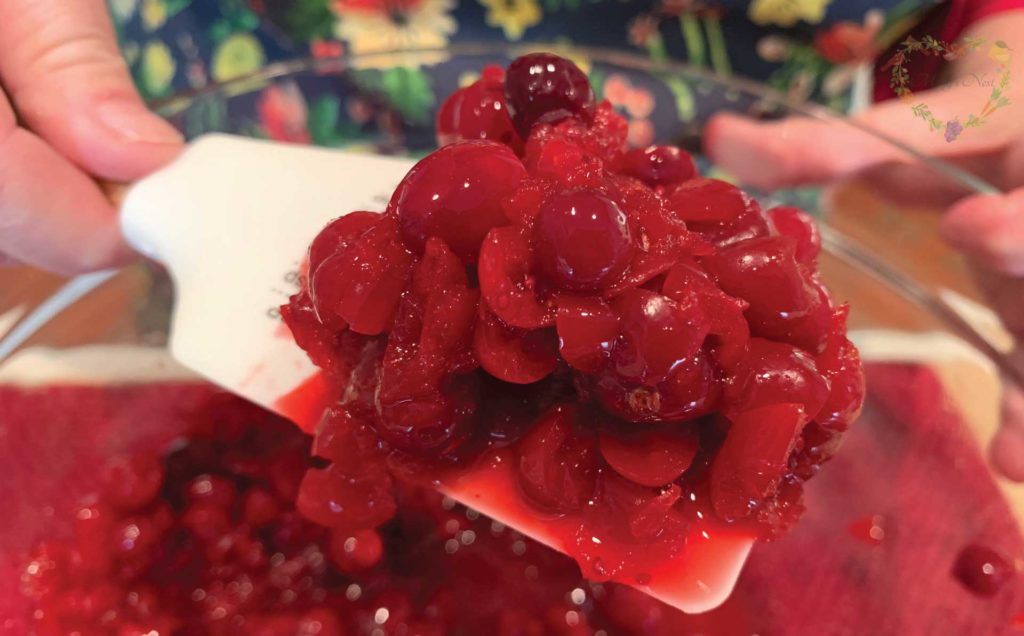
When you ferment cranberries, you don’t want to add any additional sweetener at the start of the fermentation process. Otherwise, the added sweetener will accelerate the fermentation, and you are more likely to make cranberry alcohol than lacto-fermented cranberries!
So how do you sweeten your cranberries to turn them into Fermented Cranberry Sauce? Once your cranberries reach the lacto-fermentation stage, you will add sweetener to your cranberries. (You’ll want to use a whole sweetener like honey or Sucanat.)
Next, you’ll want to thoroughly mix the cranberries with your sweetener, decant your mixed cranberries in a jar, and refrigerate them.
When to Eat Your Fermented Cranberries
You’ll want to eat your refrigerated fermented cranberry sauce within a few weeks of making it. Even though your ferment is at a cooler temperature, the fermentation process will continue in your refrigerator, but at a much slower rate than when your ferment was resting on your kitchen counter.
Within about four weeks or so, you will most likely have what I call a “boozy” cranberry sauce since your ferment will most likely have moved into the alcohol stage.
So to enjoy a lacto-fermented cranberry sauce, be sure to make a small amount at a time and eat your fermented cranberry sauce within a few weeks of making it.
Answering Your Fermentation Questions
If you’re new to fermentation and making this fermented cranberry sauce for the first time, the following videos can help you learn more about the fermentation process. And experienced fermenters will discover helpful tips too!
Masontops Fermentation Kit
If you’re new to fermenting, I highly recommend the Masontops Fermentation Kit. It contains almost everything you need to get started. All you need to add is your mason jars. I show you the contents of the kit in my unboxing video.
If you decide to get a Masontops Fermentation Kit, be sure to use my one-time 15% off promo code MARYSNST with your Amazon purchase.
Another Cranberry Sauce Recipe
If you would like to have both fermented cranberry sauce and regular cranberry sauce on your holiday table this year, I’ve got you covered. Watch the video below and make my citrus cranberry sauce that is sweetened with a whole sweetener—instead of white sugar—for added nutrition.
More Holiday Recipes
To enjoy with your fermented cranberry sauce, try these other recipes to enjoy at your holiday dinner table.
Start Your Traditional Foods Journey
Sharing my passion for traditional cooking goes beyond my YouTube cooking school—it also comes to life in the pages of my cookbooks. Both of my books, The Modern Pioneer Cookbook and The Modern Pioneer Pantry, are proudly published by Penguin Random House.
The first is filled with time-honored recipes to help you create a traditional foods kitchen, while the second is your complete guide to home food preservation. Order both books today to start or continue your traditional foods journey.
Download Your Free 36-Page Pantry List
For an extensive list of the traditional foods you can make and purchase to stock your pantry, be sure to download my free 36-page Traditional Foods Pantry List. This comprehensive eBook is full of links to recipe videos, helpful articles, and more!
Join the Traditional Foods Kitchen Academy
Are you looking for more traditional foods videos? If so, I invite you to join the Traditional Foods Kitchen Academy. Members of this optional paid YouTube community get access to exclusive videos and other members-only perks. Plus, your YouTube comments include a special members-only badge.
Kitchen Academy Videos
How to Make Oatmeal Higher in Protein (The Old-Fashioned Way)
Turn simple oats into a hearty, protein-rich porridge.
The Only Traditional Recipes You’ll Ever Need!
Focus on traditional recipes with real food. Don’t chase trends.
Let’s Talk Akkermansia: A Tiny Helper for Big Gut Health
Discover how Akkermansia muciniphila supports gut and immune health—and how traditional foods help this mighty microbe thrive.
Stay in Touch with Mary’s Nest
- Subscribe to My YouTube Channel for Traditional Foods Videos (Free) - When you subscribe, be sure to click on the notification bell that will let you know each time I upload a new video.
- Subscribe to Mary’s Traditional Foods Newsletter (Free) - Get a free 36-page eBook for signing up: How to Stock Your Essential Traditional Foods Four-Corners Pantry.
- Join the Traditional Foods Kitchen Academy - For more detailed videos and exclusive members-only perks, join my YouTube membership community.
- Order The Modern Pioneer Cookbook - Get a hardcover book of Mary's nourishing recipes from a Traditional Foods Kitchen. This bestselling cookbook is published by Penguin Random House with their DK imprint.
- Order The Modern Pioneer Pantry - Get Mary's latest hardcover cookbook about preserving food and making delicious meals from your Four Corners Pantry. Mary's second cookbook is also published by Penguin Random House.
I look forward to having you join me in my Texas Hill Country Kitchen!
I’d like to receive more tips and recipes from Mary’s Nest.
Fermented Cranberry Sauce
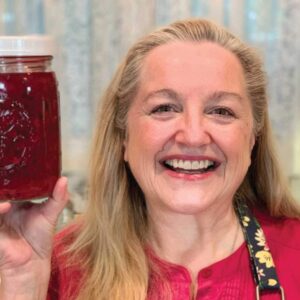
Equipment
- 1 quart-sized jar with a lid
- 1 four-ounce jar or glass fermentation weight
- 2 medium or large bowls
Ingredients
Ingredients Needed to Make Fermented Cranberries
- 3 cups Cranberries, raw
- 1/4 cup Whey Strained from plain yogurt or plain kefir.
- 1/2 tbsp Coarse ground sea salt Reduce to 1/4 tbsp, if using fine ground sea salt.
- Filtered water, preferably chlorine-free
Ingredients Needed to Make Fermented Cranberry Sauce
- Fermented Cranberries from this recipe
- 1/3 cup Honey or maple syrup You can substitute a whole "powdered" sugar, such as Sucanat, maple sugar, coconut sugar, or date sugar.
Instructions
- When it comes to fermenting cranberries, to ferment them properly and use them to make cranberry sauce, you will want to split the cranberries. You can do this by chopping them with a knife or smashing them in a jar or a large bowl using a kraut pounder, wooden spoon, or spatula.
- When you are splitting the cranberries, you may be tempted to chop them in a blender. DO NOT do this. They will be chopped too finely and will ferment too quickly, creating alcohol. You may use a food processor, but if you do this, you will need to be very careful. You will need no more than a few pulses to sufficiently chop the cranberries.
- Once the cranberries are split, add them to the jar, if they are not already in the jar.
- Add the salt and the whey to the jar.
- Add the water to the jar until the cranberries are completely submerged.
- Weigh down the cranberries in the jar with a second small jar or a glass fermentation weight.
- Put the cap on to the jar and place the jar in an undisturbed place out of direct sunlight where the temperature is approximately between 68°F and 72°F. (As a safeguard, I HIGHLY recommend placing the jar into a bowl to catch any fermentation brine that might bubble out of the jar, even with the lid on. See my video for an example.)
- Each day, release the cap on the jar to remove any buildup of carbon dioxide. If you use special equipment, such as a "pickle pipe" or another fermentation device, you do not need to do this step.
- After a few days, you should start to notice a few bubbles accumulating in your jar. The bubbles indicate the fermentation process is moving in the right direction. The secret is to "catch" your fermentation when it is in the bubbling stage before it moves on to turn into alcohol. (This stage of fermentation usually occurs within 3-4 days. See below.)
- Within 3-4 days, you should see a lot of bubbles, and this indicates that your fermented cranberries are ready. Now is time to move on to the next step.
- Using a mesh strainer, strain your cranberries over a bowl to catch the cranberry brine. DO NOT throw this brine out.
- Transfer the cranberries to a bowl and add a whole sweetener to your taste. I recommend between 1/4 cup to 1/3 cup honey. (In my recipe video, I like to use 1/4 cup for myself or 1/3 cup if I'm making the cranberry sauce for my family.)If you would prefer to use a whole sweetener, such as Sucanat, I recommend that you pulverize it first to make it into a powdered form. It will then blend much easier with the fermented cranberries. If you are using a powdered sugar, you may need up to 1/2 cup to reach the desired sweetness. If the cranberries appear dry, you can add back some of the brine.
- Decant the fermented cranberry sauce into a jar and refrigerate. It will stay fresh, refrigerated, for about 2-3 weeks, after which time it will begin to turn into alcohol and then vinegar.
- You will want to save the remaining brine and use it as a jumpstart for other fruit ferments. You can add the brine to the other ferments in addition to whey and salt.As an alternative, you can use this brine to make a refreshing probiotic-rich beverage. Add 1/4 cup of the brine to a tall glass, stir in a bit of honey or honey simple syrup, and then top off your beverage with some sparkling water for a refreshing "Mocktail." (See the recipe notes for information on how to make a honey simple syrup.)
Video
Notes
Shop for items used in this blog post or video
Favorite Fermentation Supplies
- Wide Mouth Quart Size Jars
- 4-Ounce Jelly Jars
- Leak Proof/Airtight Storage Lids
- Silicone Pickle Pipes
- Fermentation Glass Weights
- Wooden Pickle Packer
- Wooden Kraut Pounder
- Masontops Complete Fermentation Kit (promo code below)
Use promo code MARYSNST for a one-time 15% off Masontops and Breadsmart products on Amazon.com.
Favorite Sweeteners
Favorite Kitchen Supplies
- Favorite Aprons
- Spice Grinder
- Countertop Burner (On my kitchen island in many recipe videos.)
- Handheld Vacuum Sealing System
- Vacuum Lids
- Whisk
- Silica Gel Packets (Helps keep moisture from building up in your mix)
- Cast Iron Dutch Oven
- 8-Quart Slow-Cooker
- Fat Separator (Clever kitchen device to help you decant bone broth)
- Flour Sack Towels
- pH Strips (Helps you check on the acidity of your vinegar)
Amazon Shop and Shopping Guide
- Visit Mary’s Nest Amazon Shop
- Visit my Shopping Guide page
Get up to 15% off for stocking your Traditional Foods Pantry and equipping your Modern Pioneer Kitchen, including discounts from US Wellness Meats, Farmhouse Teas, Backwoods Home, Masontops, Cultures for Health, Survival Garden Seeds, Redmond Real Salt, Mother Earth News, and More!
Recommended Reading
- The Modern Pioneer Cookbook
- Nourishing Traditions
- Wild Fermentation: The Flavor, Nutrition, and Craft of Live-Culture Foods (2nd edition)
- The Art of Fermentation: An In-Depth Exploration of Essential Concepts and Processes from around the World
- Fermented Vegetables: Creative Recipes for Fermenting 64 Vegetables & Herbs in Krauts, Kimchis, Brined Pickles, Chutneys, Relishes & Pastes
- The Farmhouse Culture Guide to Fermenting: Crafting Live-Cultured Foods and Drinks with 100 Recipes from Kimchi to Kombucha
- Traditionally Fermented Foods: Innovative Recipes and Old-Fashioned Techniques for Sustainable Eating
